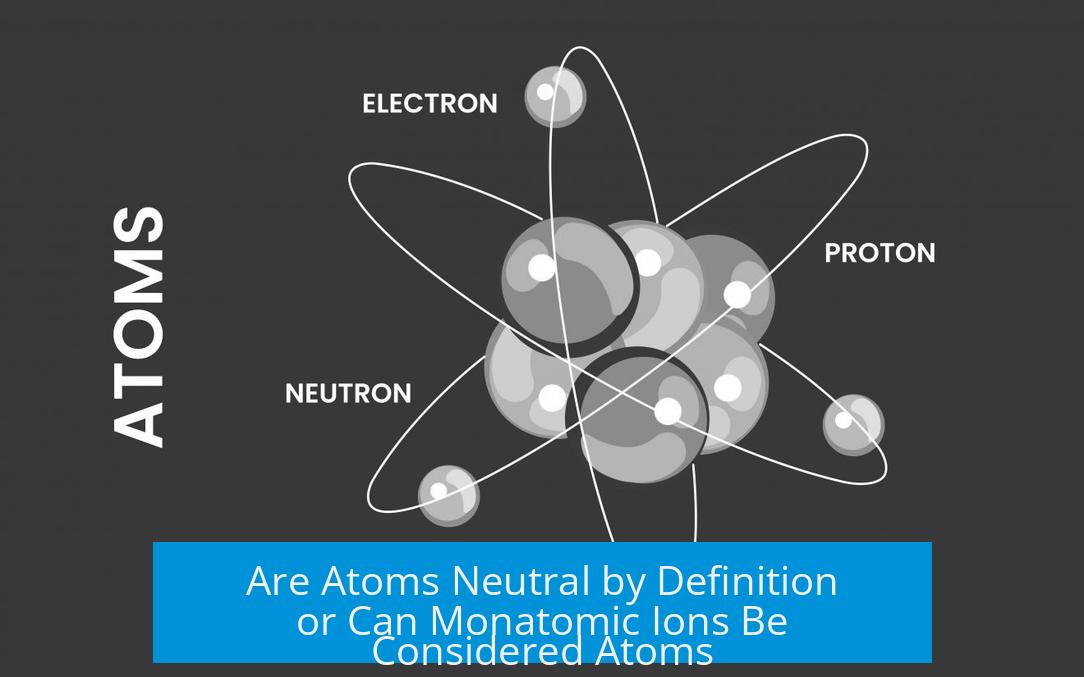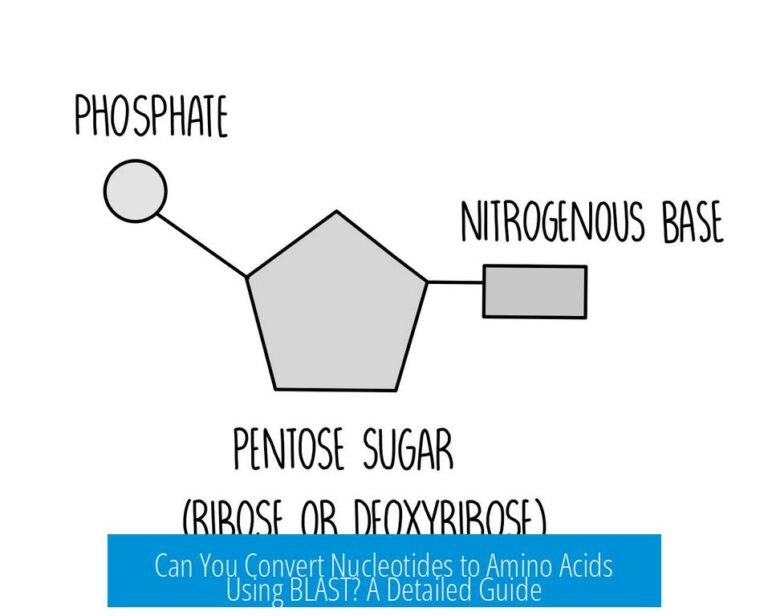Are Atoms Neutral by Definition or Are Monatomic Ions Considered Atoms Too?
Atoms are neutral by definition according to IUPAC, which requires the number of electrons to equal the number of protons, balancing the charge. Monatomic ions, having a net charge due to electron loss or gain, do not meet this criterion and thus are not considered atoms but charged atomic particles.
Defining an Atom According to IUPAC
The International Union of Pure and Applied Chemistry (IUPAC) defines an atom as a particle composed of a nucleus and electrons in which the number of protons equals the number of electrons. This equality leads to electrical neutrality, making neutrality a core criterion for something to be classified as an atom.
Specifically, the IUPAC Gold Book states this requirement explicitly, which means any charged species deviates from the definition of an atom. Therefore, atoms are neutral entities by this strict definition.
What Defines an Ion and Its Relationship to Atoms
Ions are atomic or molecular particles that carry a net electrical charge. A monatomic ion is an ion composed of a single atom that has lost or gained electrons, thus acquiring a positive or negative charge.
Because ions have unequal numbers of protons and electrons, IUPAC purposefully avoids labeling them as atoms. Instead, ions are classified separately as charged particles. Monatomic ions are distinct from atoms under this nomenclature.
Neutral Atoms Versus Charged Species
Neutral atoms contain equal numbers of positively charged protons and negatively charged electrons. This neutrality is fundamental for the atom’s identity as per formal chemical definitions.
Monatomic ions arise when atoms gain or lose electrons to reach a more stable electronic arrangement. This charge imbalance causes ions to differ chemically and physically from neutral atoms.
Practical Perspectives in Teaching and Usage
In educational settings, atoms are usually introduced as neutral units to simplify learning about atomic structure and chemical interactions. Teachers emphasize neutrality to avoid confusion when studying the balance of protons, neutrons, and electrons.
Later, the concept of ions is introduced as charged species derived from atoms. However, instructors may at times allow flexibility in language depending on the context, especially when considering mass or chemical reactions where charge constancy is less central.
Neutrality and Stability of Atoms
Atoms often achieve stability through electron configurations represented by complete outer shells, which sometimes requires losing or gaining electrons to form ions.
For example, oxygen commonly exists as O2− ions rather than neutral atomic oxygen. Neutral oxygen atoms (eight electrons) are less stable compared to ions with filled valence shells. The neutral atom is real but typically short-lived or reactive, making ionic forms prevalent in natural and laboratory environments.
The Use of the Term “Free Atom”
The phrase “free atom” explicitly refers to an atom in its neutral, uncharged state, especially when comparing to ions or bonded atoms in molecules. This term helps clarify the charge state when general “atom” might be ambiguous.
In many practical contexts, “atom” is used loosely, sometimes including ions or specific charged species. However, in strict chemical terminology, the neutral free atom remains the baseline definition.
Atoms, Ions, and Molecules: Charge and Terminology
- Atoms: Neutral units with balanced protons and electrons.
- Ions: Charged particles; monatomic ions come from atoms that lost or gained electrons.
- Molecules: Typically neutral combinations of atoms bonded together, though charged molecular ions exist and are sometimes casually called molecules.
IUPAC distinguishes these categories based on charge, highlighting the importance of neutrality for atoms versus charged states for ions.
Context Dependence of the Definition
Interpretations can vary across different fields and practical contexts. For example, in nuclear chemistry, the emphasis on nuclei extends the idea of an “atom” to include isotopes, which differ in neutron number but remain neutral overall.
In disciplines like astrophysics, the concept of an atom may include transient charged states or ions for practical reasons, focusing more on composition than strict neutrality.
Thus, while the chemical community maintains that atoms are neutral by definition, real-world usage and specific scientific needs can influence terminology.
Summary Table: Atoms Versus Monatomic Ions
| Characteristic | Atom | Monatomic Ion |
|---|---|---|
| Charge | Neutral (equal protons and electrons) | Charged (unequal protons and electrons) |
| IUPAC Classification | Atom | Ion (not considered an atom) |
| Examples | Hydrogen atom (H), Oxygen atom (O) | Protonated hydrogen (H+), oxide ion (O2−) |
| Stability | Often unstable in isolation; may form ions or molecules | Typically more stable due to full/empty electron shells |
Why Neutrality Matters in Defining Atoms
Neutrality reflects a fundamental balance that determines how particles interact chemically. Neutral atoms serve as the baseline building blocks in chemistry.
When this balance shifts, resulting in charged species, their chemical and physical properties differ markedly. Hence, distinguishing strictly between atoms and ions clarifies chemical discussions.
Common Misunderstandings and Clarifications
- Terms sometimes used loosely: People might refer to ions as atoms in casual language, especially when the charge is not central to the discussion.
- Notation conventions: Writing “Na” implies the neutral sodium atom, while “Na+” clearly identifies a monatomic ion.
- Charge unstated ≠ neutral by default: If charge isn’t mentioned, it’s safer to assume neutrality, but this is contextual and not strictly definitional.
Examples Illustrating the Distinction
Consider sodium in nature. The neutral atom (Na) exists as described on the periodic table. However, in most chemical environments, sodium is found as Na+ ions, which are not atoms but charged species derived from atoms by electron loss.
Similarly, chlorine exists as neutral atoms on the periodic table, but in chemical reactions, it often forms Cl− ions by gaining an electron.
Importance of Clear Communication
Scientists and educators emphasize using precise language to avoid confusion between atoms and ions. Indicating charge explicitly helps maintain clarity.
While semantic debates occur, the chemical community benefits from adhering to the IUPAC definitions in formal contexts. In informal discussions, qualifiers and context guide understanding.
Key Takeaways
- According to IUPAC, atoms are neutral with equal protons and electrons.
- Monatomic ions are charged, formed when atoms lose/gain electrons; thus, they are not atoms by strict definition.
- Neutrality is central to the atom’s identity but can be context-dependent in practice and education.
- Stable chemical forms often exist as ions or molecules rather than pure neutral atoms.
- Clear specification of charge and context is critical for effective communication in chemistry.
Are atoms neutral by definition according to IUPAC?
IUPAC defines an atom as having the same number of protons and electrons, meaning it must be neutral. Charged particles are termed ions, not atoms, under this strict definition.
Are monatomic ions considered atoms or something else?
Monatomic ions are charged particles derived from atoms but are not called atoms because they carry a net charge. Ions differ from atoms by definition.
Why do some people refer to ions as atoms in casual contexts?
Sometimes ions are loosely called atoms since they come from atoms. But strictly, an atom is neutral. The term “atom” may be used broadly in some discussions to include ions.
If atoms are neutral, why do ions form commonly in nature?
Atoms often lose or gain electrons to become ions for stability. While atoms are neutral by definition, ions are the stable forms usually encountered, such as O²⁻ for oxygen.
Does the term “atom” always imply neutrality in all scientific fields?
The meaning depends on context and discipline. In strict chemical terms, atoms are neutral, but some fields or everyday use may be more flexible. Clear communication is key.





Leave a Comment